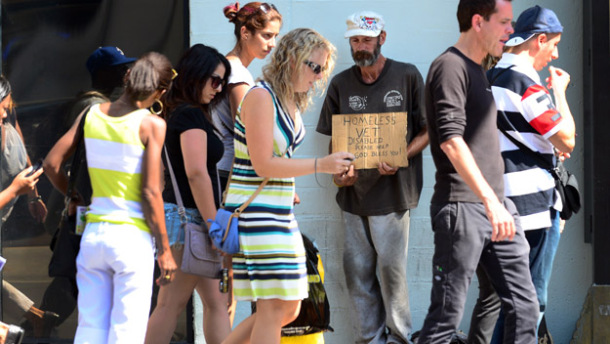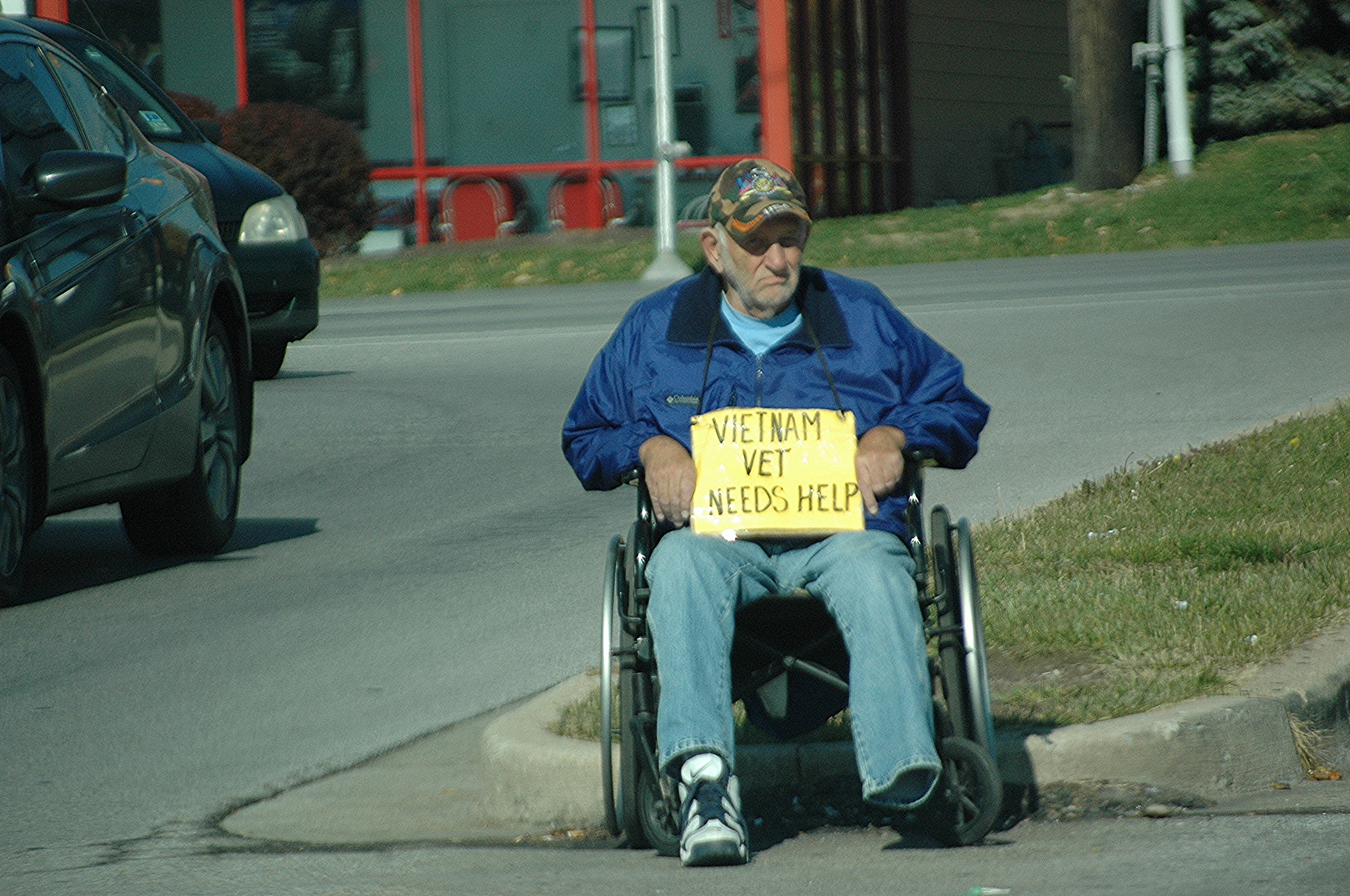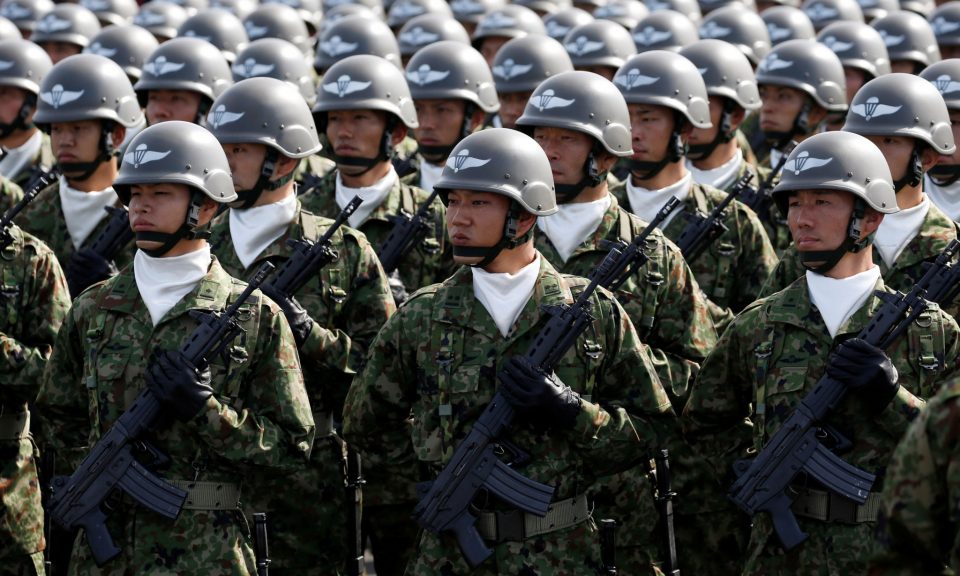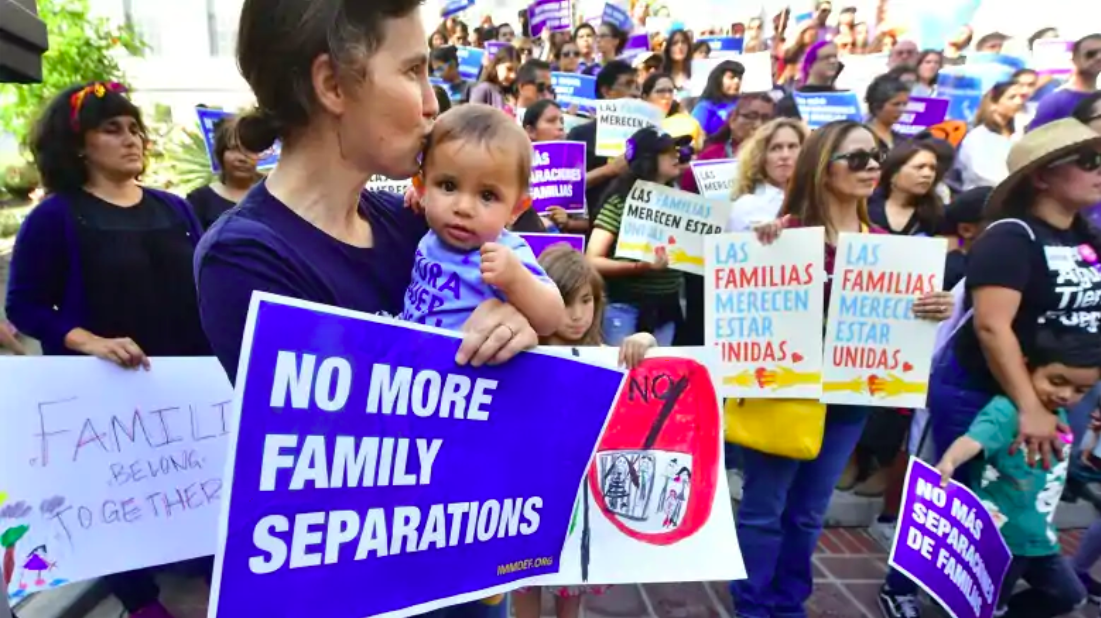I remember the day I first gave money to someone in need. It was a beautiful summer day, and swarms of people were entering into the Baltimore Orioles Baseball stadium when suddenly, a stranger near the gates said, “Hello, I’m a struggling actor between jobs, do you have any spare change?”
I looked over in surprise and nearly choked on my Diet Coke when I saw Channing Tatum. I promptly cracked open my wallet and said “Channing, please take all of my money. And my house. Also, please marry me.” He accepted my offer, and we are currently living in my parents’ house in Maryland.
Truthfully, Tatum has never been homeless and doesn’t need the change at the bottom of my purse (Channing if you’re reading this, donate to my Venmo), but even if we did pass him begging on the street, who would notice?
While I may joke about a celebrity wanting my assortment of dimes, plenty of celebrities had been homeless. Can you imagine walking past Jennifer Lopez on your way to work? Giving Steve Jobs or Chris Pratt some change? Likely not. When people walk through the streets, they often avoid eye contact with the homeless out of judgment.
Despite the few people who come out of homelessness only to rise to stardom, there are people in the streets all over the world, be it the Philippines, Russia, Mexico, or the United States, who just want a stable home, but are invisible to the community and their government, seen only as an occasional nuisance.
These countries and others are failing horribly at solving the homelessness problem and need a new way to fix it for the people who have an unwritten future. So why are we so bad at helping them find that future?
The assumption around giving money to people in need is that those people will likely use the money for drugs, alcohol, gambling at the local casino, or other vices that hinder their progression towards stability, and this demonstrates the idea that people in need can’t be helped if they’re not willing to help themselves.
It’s convenient how that idea absolves people of any responsibility.
This is something in every country in the world faces and yet there are countries that are handling the homeless epidemic simply better than we are.
Did you know it costs taxpayers thousands of dollars per homeless person who sleeps on the streets due to medical bills and other costs? In the United States, homeless shelters often teach occupants, innocent of crimes or not, that they are the problem by insisting that they find the causes of their situation within themselves.

Problems within the government or society that contribute to the epidemic are considered nonexistent for the most part. Our current failing system utilizes the “medicalization of social problems,” which solves few of the biggest problems that greatly impact homelessness.
This is a tough concept for many people, but there is actually a way to improve the lives of hundreds of thousands of people in the United States and what makes our system different from the leading countries in homeless rehabilitation, is partially in what order we attempt to solve the problem.
Usually, the United States starts with shelters to “reform” the person themselves, and then they move onto a stable life for the person in need. People in low-income communities are substantially more at risk for homelessness because of how unaffordable housing is. In some circumstances, this idea of “fixing” someone who just can’t afford housing is not productive.
The United States’ neighbor, Canada, has homelessness percentages that have been notoriously small and what they have done has gained them fame for helping to stop homelessness. The solution lies in part with the most obvious problem.
Homeless people who struggle with affordable housing don’t have houses, so Canada began the Housing First approach to solve the social problem. Instead of trying to solve the problem psychologically first, Canada proposed that people in need are given permanent housing before treatment to help aid in their reintegration into society. This idea has taken off and has drastically improved the homeless situation in the years that followed.
The cost of living is so expensive that homeless people who are recovering or in trouble are rarely able to take care of themselves, even when they are employed. The decision to put them in housing first has effectively helped those in need and ultimately changed the way that Canada deals with the homeless problem.
So, we’ve learned that, first of all, you can’t blame the homeless problem solely on those in need and second, the system does not work, so now what? Maybe homeless people deserve life on the street because they made their bed, so they sleep in it like the rest of us. And here is when we learn that third, social stigmas around homelessness are just another excuse not to help people and is the thinking that hinders progress.
In all fairness, this way of thinking is in part from the whole of society, not just you. However, everyone, including myself, should make a more conscious decision not to be so quick to generalize a large percentage of our population.
I volunteered during high school at a place called Paul’s Place in downtown Baltimore. It provides employment for rehabilitated people, educational opportunities, help with housing, advice on stability and self-sufficiency, help concerning health care needs, the soup kitchen for adults and kids in the area, and a “shopping” station upstairs for people to get clothes for themselves and their children.
I worked upstairs with clothing on Thursdays, men’s days, so I would grab a bag and help whoever came in. On that first day, I expected someone terrifying, who clearly deserved to be on the streets, when instead, I met a man who was a veteran and couldn’t get a job because he had been badly wounded. I met a twenty-something-year-old guy who insisted I tell him which color looked better on him for his interview. I met a young man who brought his two little daughters in for school clothes.
Now, looking back, I see how stigmas affected my judgment of people I didn’t know. Yes, there were people who you could tell needed help, but they were people. They were all people who had names and histories. They were people who recognized me two weeks later by name and asked me how I was.
Seeing the work Paul’s Place did for people in need changed my world perspective, showing me that there are good people who see and hear the invisible masses. I regret not being there more to help when the clothing stacks pile up and there aren’t enough volunteers, leaving the dedicated to become swamped with work.
Who can we blame then?
Homelessness is an epidemic throughout the world. It is our job to advocate for human rights and to help people because we are people too. The systems in place are not working. It isn’t one person’s fault for this, and social stigmas create even more layers to an already complex problem.
There are steps not being taken that could ensure a brighter future for those in need and teach people all over the world to be more accepting and understanding. The United States and other countries with homelessness problems should utilize resources to come up with a solution that has more stability than plans in the past that lead to continued homelessness.
To help end the stigma, volunteer work should be more encouraged and significant in our society, with adults who encourage children to not judge people solely for their different status in life.
It is time our countries and people came together and found a better plan because, in the end, there are problems that have solutions. It is a privilege to know and see these people who have the right to be treated like human beings, and that they have the right to be someone who rises from the invisible masses.




















